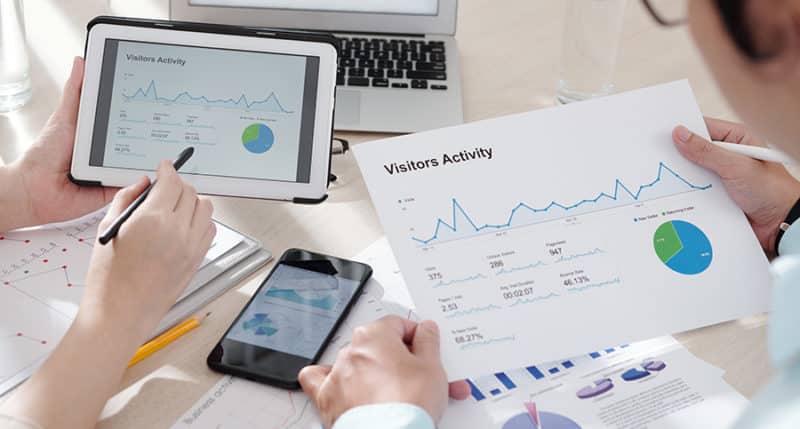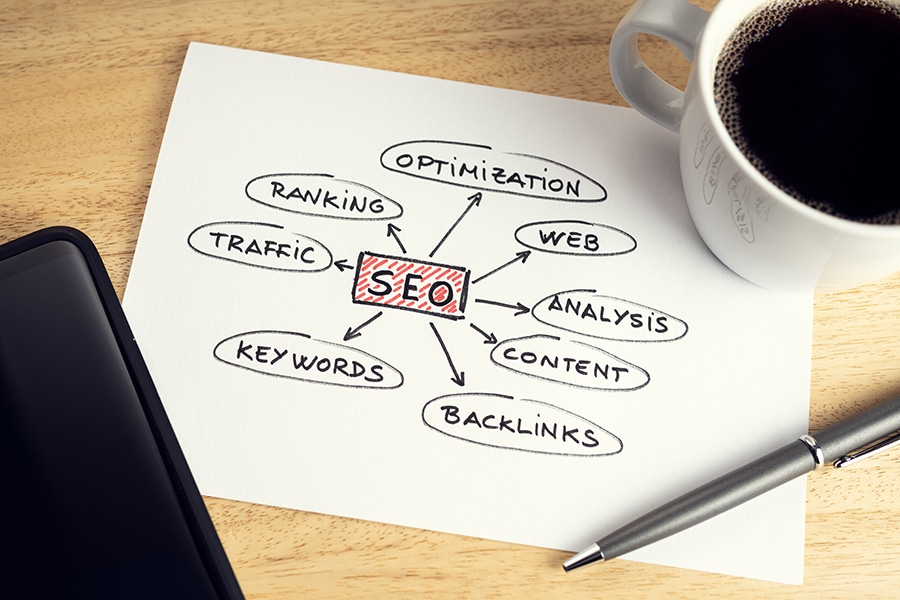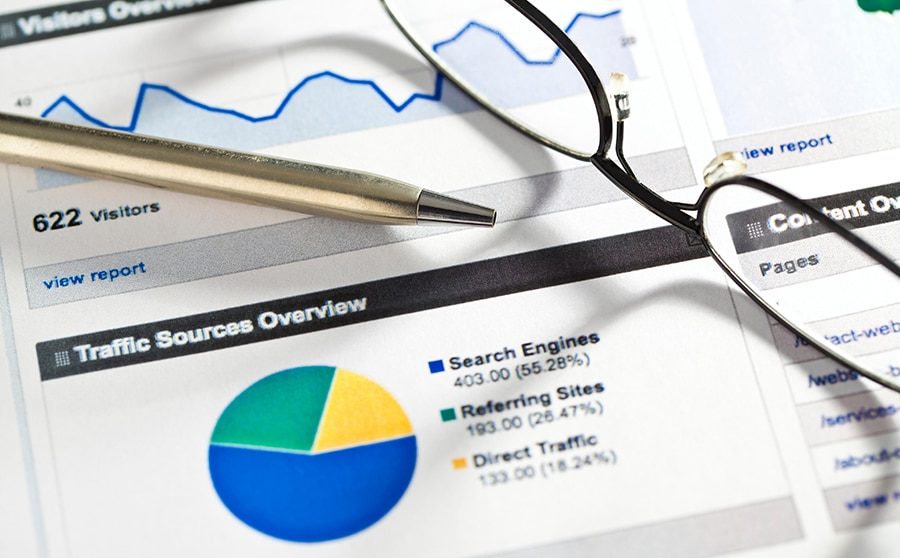Table of Contents
Unlocking the Power of On-Page SEO to Boost Your Rankings

Whether you’re a marketer or a business owner, it seems we’re hearing about search engine optimization everywhere nowadays. Among all the SEO strategies out there, improving your on-page SEO stands out as one of the most effective ones, and for good reason! After all, it can significantly impact a website’s performance and visibility online.
However, since every single on-page SEO element is completely up to you to determine, create, and optimize, it’s key that you know how to do it correctly. That’s why, today, I’m going to over the basics of this SEO pillar and examine each element you must work on closely, so you can be sure you’ll know exactly what to do with each.
Table of Contents
What Is On-Page SEO?
Alright, so we already know that “SEO” stands for “Search Engine Optimization,” but what does “on-page” mean? Well, it refers to the process of improving various elements within a web page so it ranks higher in the search engine results and drives more organic traffic.
What’s the Difference between On-Page and Off-Page SEO?
As I’ve mentioned, on-page SEO is the practice of optimizing a website’s content and structure to boost its visibility. Off-page SEO, on the other hand, has to do with improving a website’s credibility, authority, and relevance through external factors such as backlinks, social signals, reputation management, and so on.
The Importance of Having an On-Page SEO Strategy
It’s been found that over 30% of SEO professionals believe that on-page elements are the most important ranking factors for search engines, but why is that so? Web elements such as keywords, meta descriptions, heading tags, and so on help crawlers understand your site and its content so they can better determine whether they’re relevant to a query.
What’s more, because visitors can actually see all of these elements, they can contribute to a positive user experience, which search engines take as a sign that your site is valuable and worth ranking higher in the SERPs.
Having a strategy will allow you to map out all the steps you must take to successfully achieve those goals and make it easier for everyone in your team to know what they should do.
8 Key On-Page SEO Elements
So, what you should focus on when optimizing your site? Here’s a list of the most important elements you should account for when working on your on-page SEO strategy:
1. Keywords
As you might already know, keywords are those terms and phrases users are likely to use when searching for information online. Identifying those most closely related to your business and integrating them into your content and meta elements aligns your pages with user intent, signaling to search engines that your page is relevant and should be shown in the search results for those keywords.
However, it’s important not to overdo it and fall into keyword stuffing, which involves adding too many keywords and in an unnatural way. While it might be tempting to do it, it can actually have the opposite effect and damage your on-page SEO efforts.
2. Content
When looking for tactics to effectively drive organic traffic to your site, you’ve probably heard advice such as “You have to create high-quality, valuable, and relevant content”. But how do you do that, exactly? First of all, you need to consider user intent and determine where it falls into the buyer’s journey.
Then, you can more easily decide which type of content you can create. For example, an informative homepage, blog posts, and videos are perfect for the awareness stage. On the other hand, an “About Us” page and case studies are great tools to convince customers you’re the right choice during the consideration stage. Lastly, an updated contact page and product demos can give prospects that last push to convert in the decision stage.
Of course, you also have other types of content like images, graphics, and charts that can visually enhance your pages and make information more engaging and easier to digest.
But regardless of what you decide to go for, this on-page element has to be optimized with keywords and/or alt tags to make it easier for crawlers to understand what they’re about.
3. Alt-Text
Alt-text stands for “alternative text” and refers to a descriptive attribute that provides a text-based alternative to images, buttons, and input elements. In the context of on-page SEO, alt-text is typically used to make content more accessible to visitors with visual impairments and improve user experience when images fail to load. Moreover, it provides crawlers with information about the element and can even be a ranking factor in image search results.
On top of making your alt-text descriptive and specific, you’ll want to keep it short (under 125 characters) and include your keywords when possible (remember to avoid keyword stuffing!).
4. Meta Description
This is a brief and accurate summary of a webpage’s content that shows up in the SERPs, right below a result’s title tag and the URL. While it’s true that meta descriptions don’t directly influence rankings, they oftentimes do determine whether people click on your page. Why? Because a compelling description that’s relevant to a user’s query is more likely to convince them to click on the link and visit your page than one that’s automatically generated by the search engine.
However, a meta description has to be kept short, otherwise, search engines cut them when they exceed 160 characters. So, to make up for the limited text you can write, try to use action-oriented language (often called “power words”) such as “discover,” “explore,” “unlock,” “find out,” and so on. You can (and should!) also incorporate your main keyword in an organic way.
5. Headers
Header or heading tags organize a web page’s content and make it more search-engine friendly by providing structure and hierarchy. They go from H1, the main heading, to H6, the lowest subheading level.
They’re important on-page SEO elements because they help emphasize your keywords and the main topics of your page’s content while allowing for easier search engine crawling and indexing. What’s more, they can improve user experience by enhancing readability and making the information more scannable.
That’s why we always recommend adding your most important keywords in your H1 and H1 whenever possible. Again, remember that their placement should feel natural
6. Page Title
SEO beginners often confuse headers with page titles when reading about web optimization, and while they’re both important on-page SEO elements, the page title is more important for two main reasons:
- It works as the main headline in the SERPs, appearing as the clickable link people use to decide whether to click on a particular result.
- It appears in the title bar of a web browser, providing a quick reference to a page’s content and making tab navigation and bookmark management easier.
When optimizing a page title, you should make sure that it accurately reflects the page’s content and includes your main keyword as naturally as possible, ideally toward the beginning. Also, try to keep your title short (under 60 characters) so it shows well in search results.
7. Page URL
As with all the other on-page SEO components so far, a page’s URL can provide a simple summary to search engines about its content and relevance to specific search queries. It also helps visitors understand the site’s structure and the relationship between different pages, improving user experience.
To make a site’s URL user- and SEO-friendly, you might want to follow a few best practices:
- Keep it short, clean, and descriptive.
- Avoid using special characters.
- Use hyphens (-) instead of underscores (_) to separate words.
- Include your primary keyword.
8. Internal Linking
Internal links, that is, the links between different (but relevant!) pages within a website that encourage both visitors and crawlers to explore more content. If people find interesting and helpful information through those links, they’re more likely to stay longer on that site, reducing bounce rates and signaling to search engines that you’re worth ranking high in the SERPs.
The key to tackling this on-page SEO component is to use a short yet descriptive anchor text, so anyone can understand what kind of content they’ll find. Also, you’ll want to overly optimize your anchor text or always use the same one for the same pages.
Wrapping Up
There’s no denying that SEO is the driving force behind a website’s visibility online, which is why no one who wants to get more visitors to their site can afford to disregard it. While it can certainly be challenging to fully understand the intricacies of optimizing your site’s online presence at first, the actionable insights I’ve provided in this post should help you make a meaningful impact on its performance.
There’ll be some trial and error for a while, of course, but don’t let that discourage you, and keep working hard. I promise you’ll be reaping the rewards soon!






